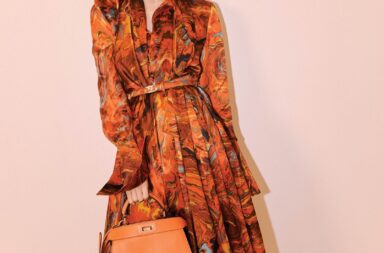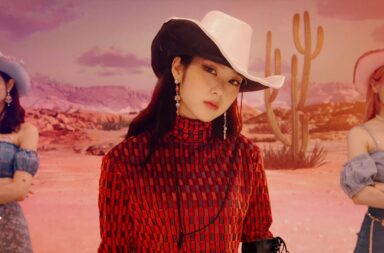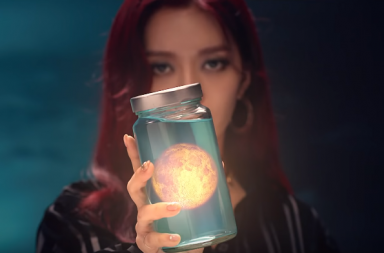 FNC Music‘s recently debuted girl band/dance group combo AOA — otherwise known as Ace of Angels — has come back to the K-pop scene with another attempt to gain fans following their debut with “Elvis.” First things first, let me clarify my initial disappointment in AOA. Hailing from a company that’s produced bands like F.T. Island and CN Blue, as well as recent female soloist Juniel, all rather distinct K-pop acts at the moment, I admittedly had very high expectations for the group. I was expecting something unique and revolutionary, something that would diversify the popular girl group scene at the moment, with nothing too overdone or cliched. Basically, I wanted and expected FNC to present us with an all-female band.
FNC Music‘s recently debuted girl band/dance group combo AOA — otherwise known as Ace of Angels — has come back to the K-pop scene with another attempt to gain fans following their debut with “Elvis.” First things first, let me clarify my initial disappointment in AOA. Hailing from a company that’s produced bands like F.T. Island and CN Blue, as well as recent female soloist Juniel, all rather distinct K-pop acts at the moment, I admittedly had very high expectations for the group. I was expecting something unique and revolutionary, something that would diversify the popular girl group scene at the moment, with nothing too overdone or cliched. Basically, I wanted and expected FNC to present us with an all-female band.
To my dismay, my wishes were only half-granted when FNC presented us with a girl band/dance group combination. While the combination was something K-pop hadn’t seen before, the indecisiveness and the over-complicated concept when it came to the group’s direction was a major turn-off. I didn’t understand the whole half-angel ordeal and how some members were absent in certain segments, and to be quite honest, I didn’t really want to bother myself with understanding it either. It was as if FNC wanted to debut two different groups but chose to combine them instead, to questionable results. Likewise, while the group prided itself in its uniqueness, the material they actually delivered was far from revolutionary. It played straight to what most rookie groups were releasing at the moment. “Elvis,” while insanely addictive and actually quite enjoyable, simply didn’t stand out, something necessary for a debuting group.
So needless to be said, my first experience with AOA ended with a bit of disappointment. However, this disappointment only made me more excited for their sophomore effort, since I was anxious to see if the group could finally find its footing. Despite their unpolished and indecisive concept, the group had much potential to go forward given the proper tweaking. And after seeing the very cosplay-tastic teaser, I couldn’t be more excited for their return. With said sophomore effort titled “Get Out,” was AOA able to impress this time around?
[youtube http://www.youtube.com/watch?v=9sn_g7aWGoU&w=600&h=360]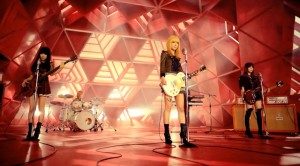 Unfortunately, at least in my opinion, this comeback really didn’t do much in fixing the preexisting and most apparent of AOA’s flaws. If anything, I’d say this comeback highlights those flaws even further.
Unfortunately, at least in my opinion, this comeback really didn’t do much in fixing the preexisting and most apparent of AOA’s flaws. If anything, I’d say this comeback highlights those flaws even further.
Let’s start with the song. The song’s major issues are the same ones I have with the group’s concept as a whole. To put it simply, the song is poorly transitioned and indecisive in the direction it wants to take. As a whole, the track lacks cohesiveness, with poor transitions and and an abundance of unpleasant progressions. Starting off with a slight rap break as an intro, the minimal transitions are already evident at the beginning. The commencement of the verses begin abruptly, with not even a single lead-in to suggest this major change in pace.
The same occurrence repeats, following the conclusion of the verses and at the start of the very disruptive pre-chorus, which also serves as the song’s hook. The change from the timid and girly chorus to the sassy and seductive bridge is offsetting to say the least, and the whole portion seems largely unnecessary and irrelevant in the context of the remainder of the entire song. 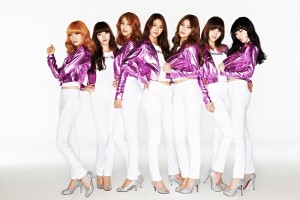 It seems like that segment was included just to give the group an excuse to take part in the butt-dance craze, the mandatory “scandalous” hook move trending among girl groups these days. The song then quiets down once again as it retreats back to its verses before the same pre-chorus disrupts the flow once more. And if the change was unsettling the first time, it’s just plain annoying the second time. The last major messy transition can be seen at the bridge of the song, which seems to feature a whole different track entirely.
It seems like that segment was included just to give the group an excuse to take part in the butt-dance craze, the mandatory “scandalous” hook move trending among girl groups these days. The song then quiets down once again as it retreats back to its verses before the same pre-chorus disrupts the flow once more. And if the change was unsettling the first time, it’s just plain annoying the second time. The last major messy transition can be seen at the bridge of the song, which seems to feature a whole different track entirely.
The lack of transitions and cohesive progressions definitely take away from the listening experience, and that’s a total shame. Taken apart, the poorly-transitioned segments aren’t actually half bad — they could’ve been great even. The verses complement the girls’ naturally airy voices, and the hook, as disruptive as it may have been, is actually insanely catchy. Moreover, while the rap break bridge in the middle of the song seems to have come out of nowhere, it came off quite well done when looked at singularly. The guitar riffs give the song a refreshing urgency, and Jimin‘s rapping, while an acquired taste, is much better highlighted through this song when compared with “Elvis.” The chorus by far is the most consistent part of the whole song. The solid and triumphant vocals giving the song a soaring feel and make it a personal favourite.
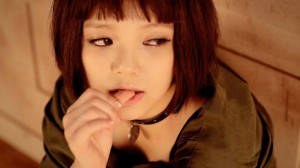 Also apparent in the song is its indecisiveness. As described above, parts of the song feel quite out of place, and this is clearly a consequence of the group’s desire to meld the best of both worlds. Obvious moments seem to cater specifically the dance group — the repetitive hook and the largely electronic verses — and others clearly mean to showcase the band — the guitar-infused rap bridge and the livelier chorus. Both come together to create a very conflicting sound, not at all helping with the song’s cohesion.
Also apparent in the song is its indecisiveness. As described above, parts of the song feel quite out of place, and this is clearly a consequence of the group’s desire to meld the best of both worlds. Obvious moments seem to cater specifically the dance group — the repetitive hook and the largely electronic verses — and others clearly mean to showcase the band — the guitar-infused rap bridge and the livelier chorus. Both come together to create a very conflicting sound, not at all helping with the song’s cohesion.
Thankfully, the video’s aesthetics are much better. There are two major settings, not counting the individual scenes in the song for the group to share: the simple futuristic, white background and the red room composed of triangular windows. The red room was probably my favorite due to all the variation of light effects, compared to the more drab white setting. I do prefer the spunkier outfits worn by the band in their scenes compared to the gaudy, yet attention-grabbing attire of the dancers. A magazine graphic cleanly transitions the constantly changing scenes from one to the other. Some of the effects used seem kind of cheap and unpolished, but this is a minor flaw.
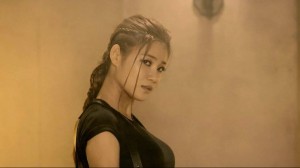 As for the scenes depicting the girls as different prominent movie characters — I see Elle Woods (Legally Blonde), Juliet (Romeo and Juliet), Mathilda (Léon: The Professional), Hermione (Harry Potter), Leeloo (The Fifth Element), The Bride (Kill Bill), Lara Croft (Tomb Raider), and Holly Golightly (Audrey Hepburn‘s character in Breakfast at Tiffany’s) though correct me if I’m wrong — as a movie buff, it is all entirely visually pleasing. The attention to detail is highly applauded, and the girls look stunning playing the very iconic roles. However, while these scenes are definitely a treat for the eyes, in the context of the song and the rest of the video, these scenes have no real value, unfortunately and ultimately being irrelevant. These allusions are most likely meant to tie in with the Wanna Be concept of their album — though then I wonder if these girls know some of these characters’ tragic stories if they ‘wanna be’ them so badly. But ultimately, much like their previous single “Elvis,” no sign of the allusion can actually be seen in the actual lyrics or content of the — admittedly shallow and childish — song.
As for the scenes depicting the girls as different prominent movie characters — I see Elle Woods (Legally Blonde), Juliet (Romeo and Juliet), Mathilda (Léon: The Professional), Hermione (Harry Potter), Leeloo (The Fifth Element), The Bride (Kill Bill), Lara Croft (Tomb Raider), and Holly Golightly (Audrey Hepburn‘s character in Breakfast at Tiffany’s) though correct me if I’m wrong — as a movie buff, it is all entirely visually pleasing. The attention to detail is highly applauded, and the girls look stunning playing the very iconic roles. However, while these scenes are definitely a treat for the eyes, in the context of the song and the rest of the video, these scenes have no real value, unfortunately and ultimately being irrelevant. These allusions are most likely meant to tie in with the Wanna Be concept of their album — though then I wonder if these girls know some of these characters’ tragic stories if they ‘wanna be’ them so badly. But ultimately, much like their previous single “Elvis,” no sign of the allusion can actually be seen in the actual lyrics or content of the — admittedly shallow and childish — song.
 Conclusively, the entirety of the project was rooted in some great ideas and sections, however as a whole, these ingenious clauses fail to make a connection. Unfortunately, “Get Out” as a single doesn’t provide much improvement from AOA since all it really does is further highlight the group’s more evident holes. However, AOA’s potential and skill as a group is still potent and available, leaving me to hope that their next effort will be better.
Conclusively, the entirety of the project was rooted in some great ideas and sections, however as a whole, these ingenious clauses fail to make a connection. Unfortunately, “Get Out” as a single doesn’t provide much improvement from AOA since all it really does is further highlight the group’s more evident holes. However, AOA’s potential and skill as a group is still potent and available, leaving me to hope that their next effort will be better.
Finally, “Get Out” gets a mediocre 2.6/5 from me. Thankfully, the B-sides of this single album were more cohesive and less all-over-the-place. “My Happy Ending” is a chill song with vibes very reminiscent of Secret‘s “Telepathy”, and “My Song” is probably my favorite tune in AOA’s discography, perfectly showcasing the girls’ skills through an uplifting tune.
But what do you Seoulmates think? Did AOA manage to charm you with their new single? What did you think of the girls’ homages? Express your opinion below!
(FNC Music, AceOfAngels8, BubbleFeetBlueCH1)
